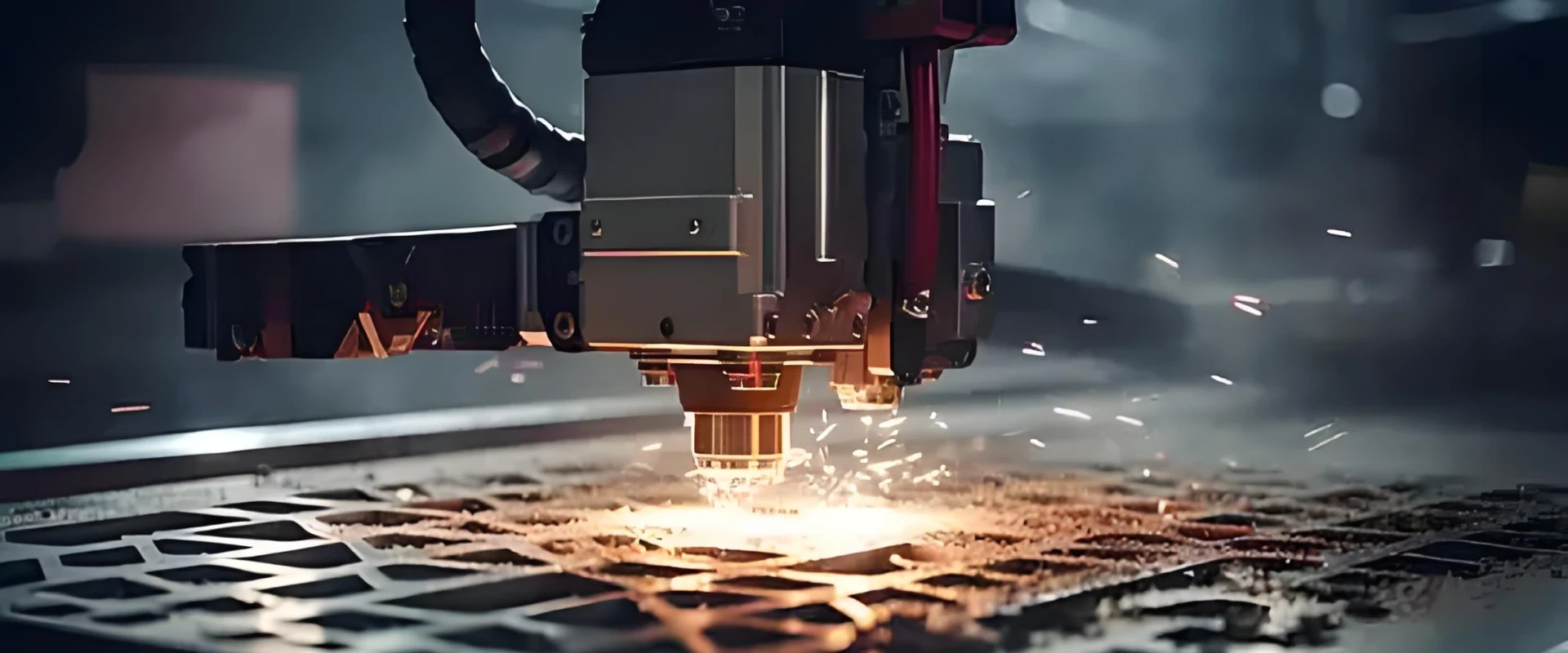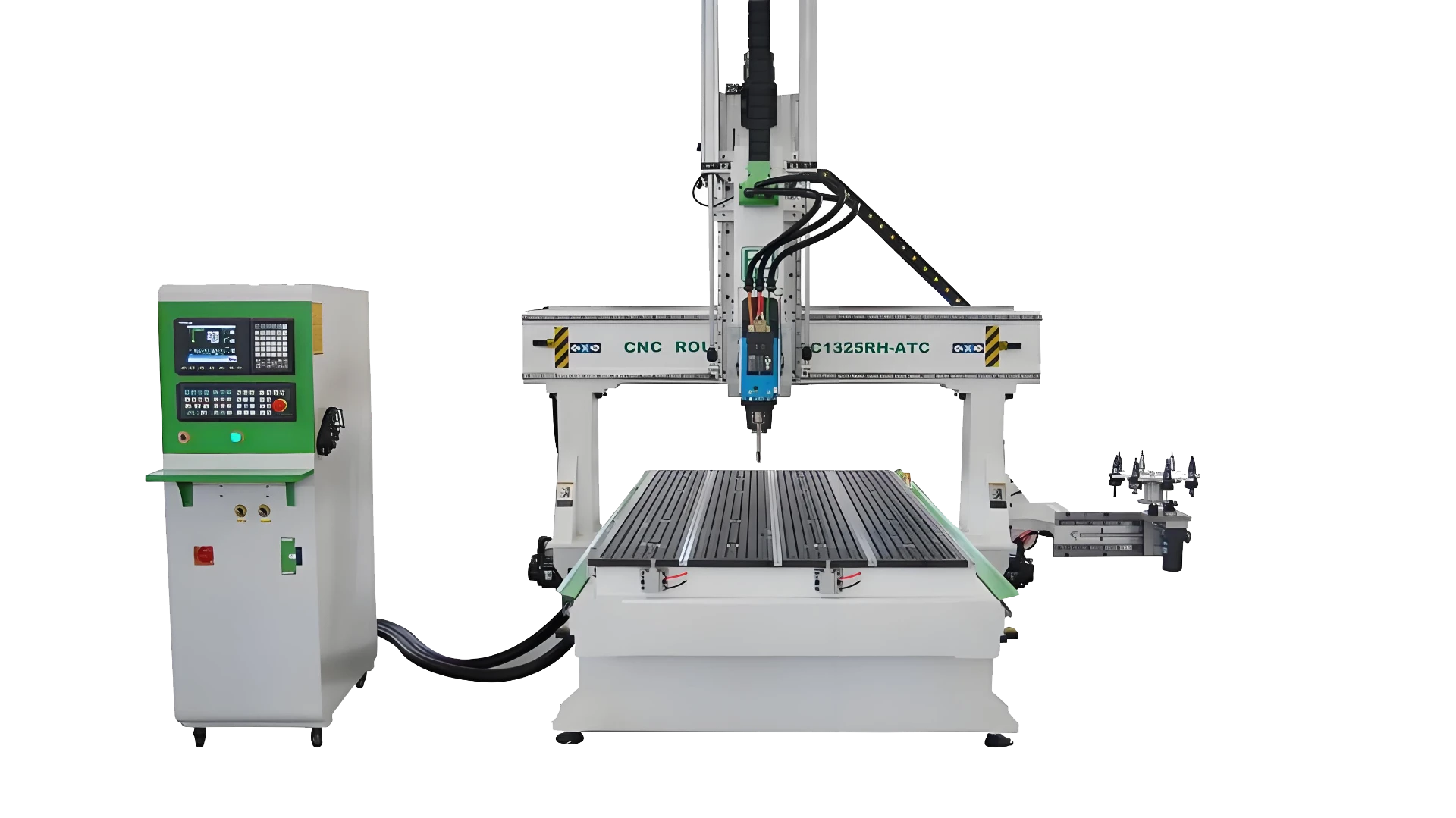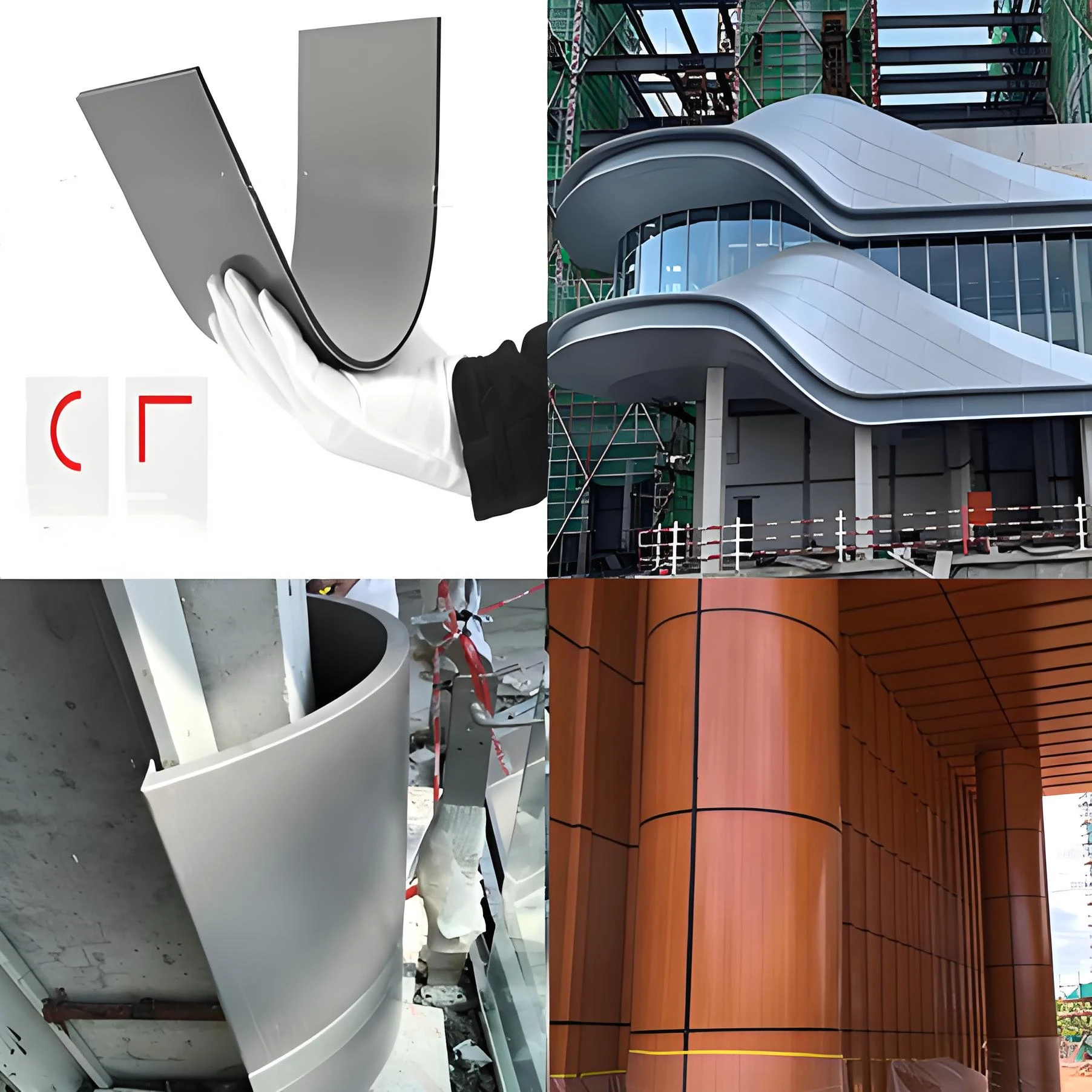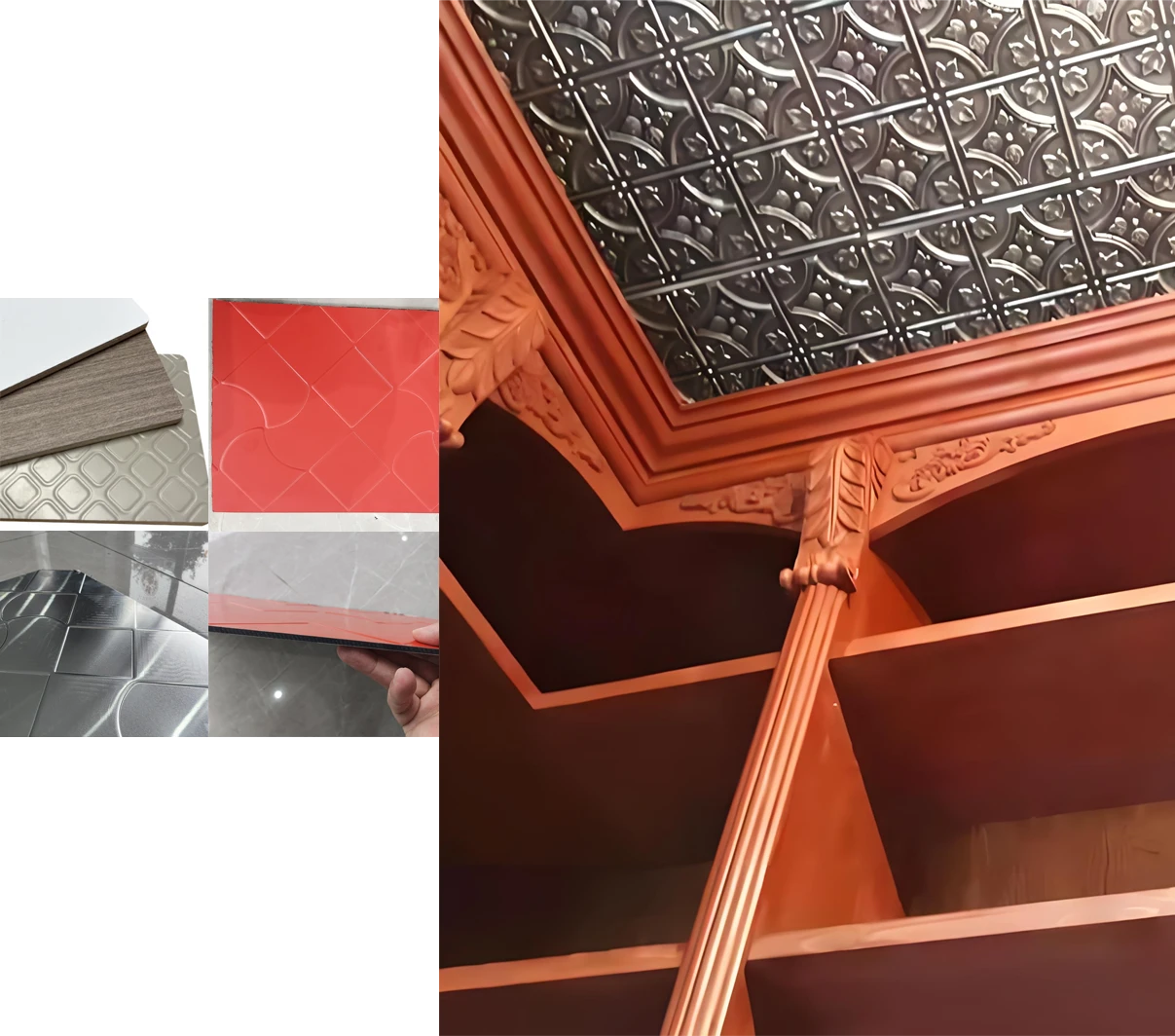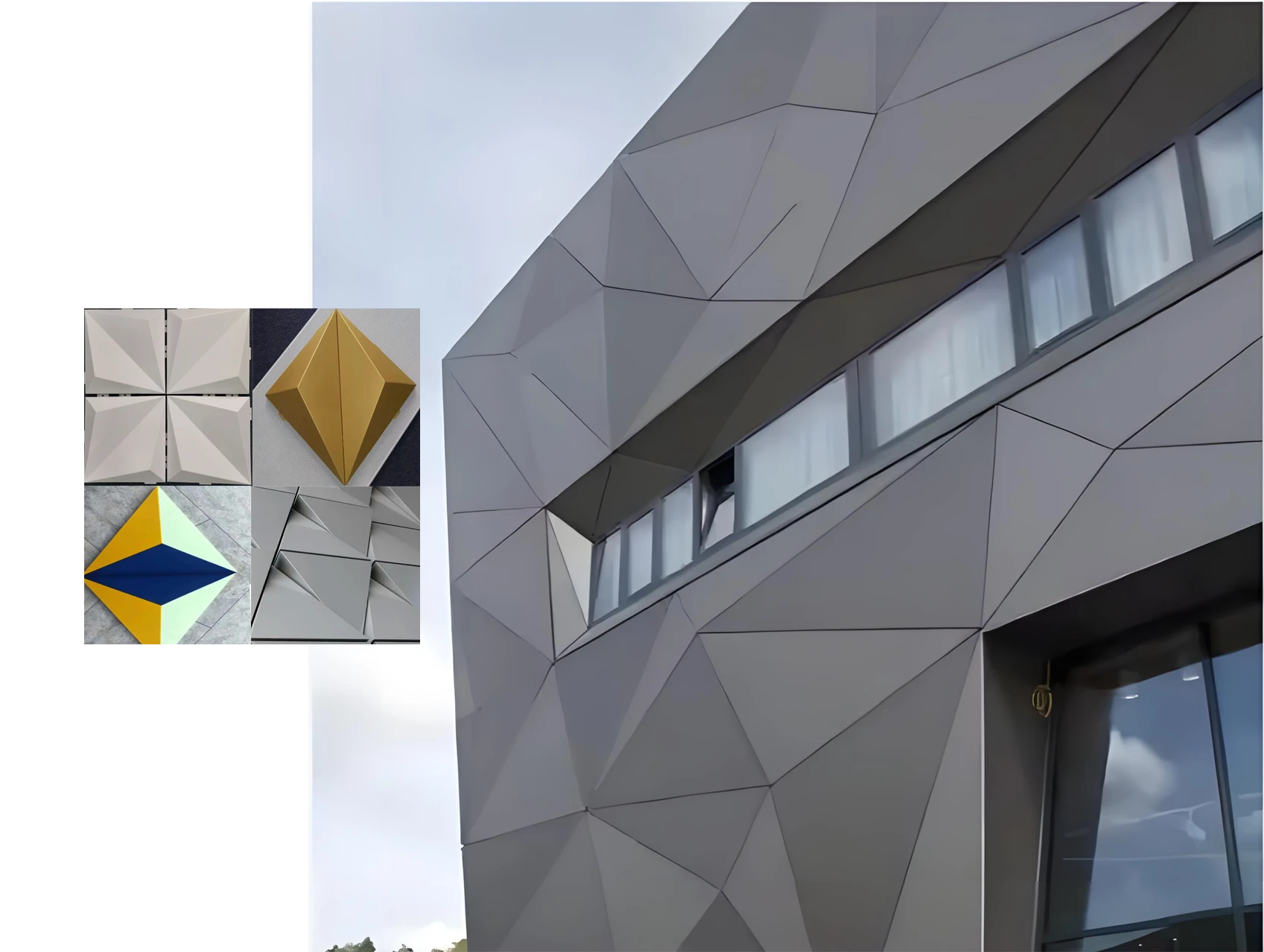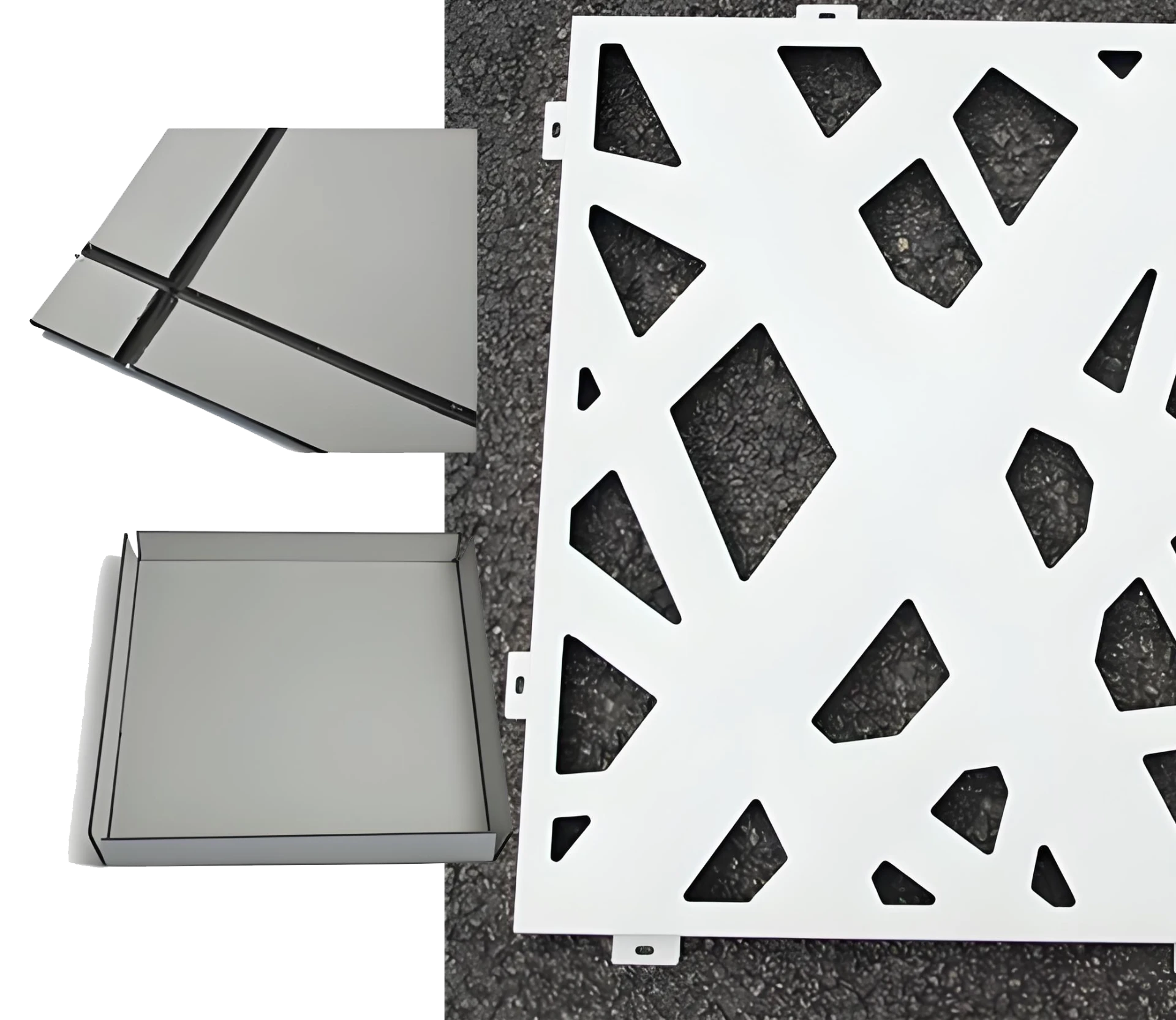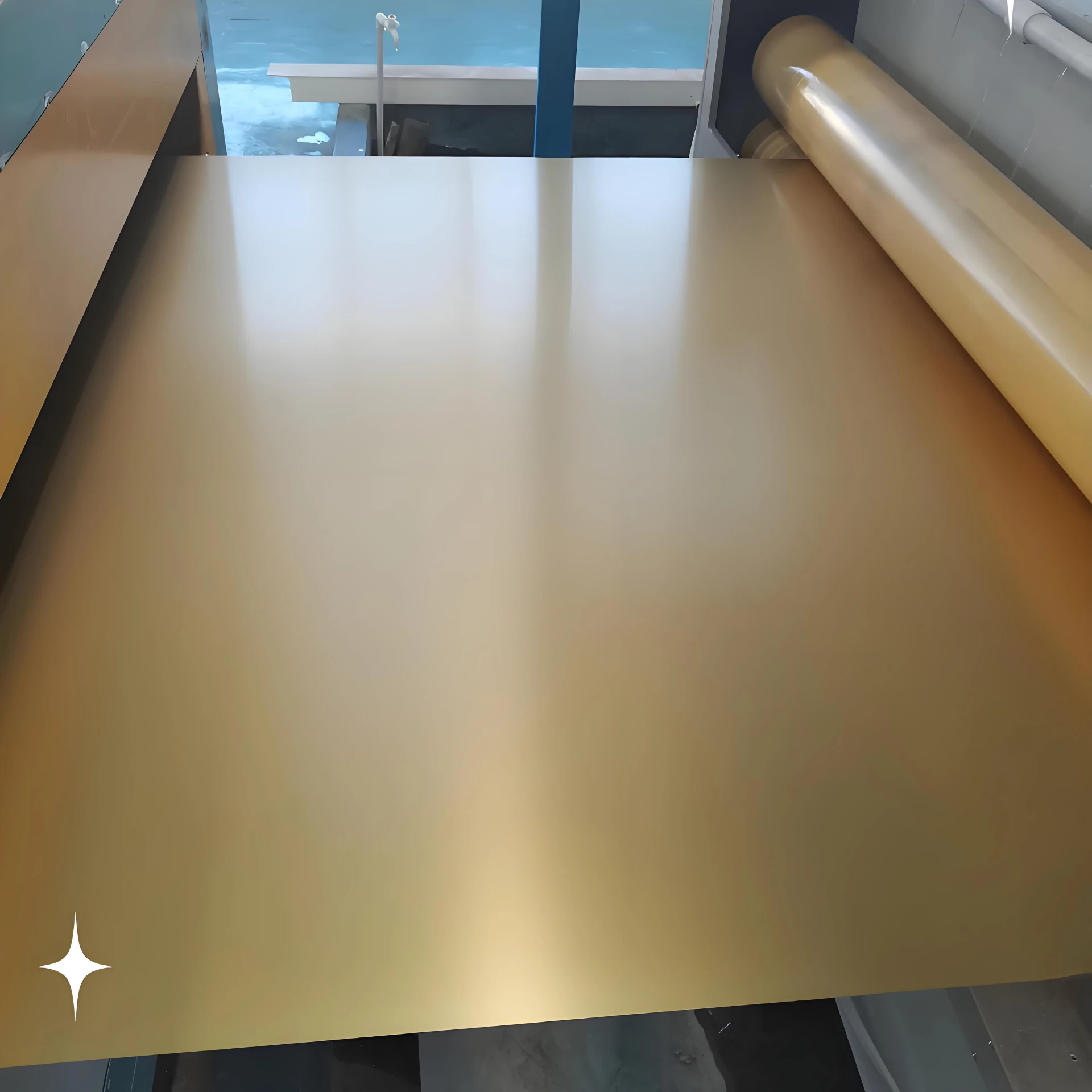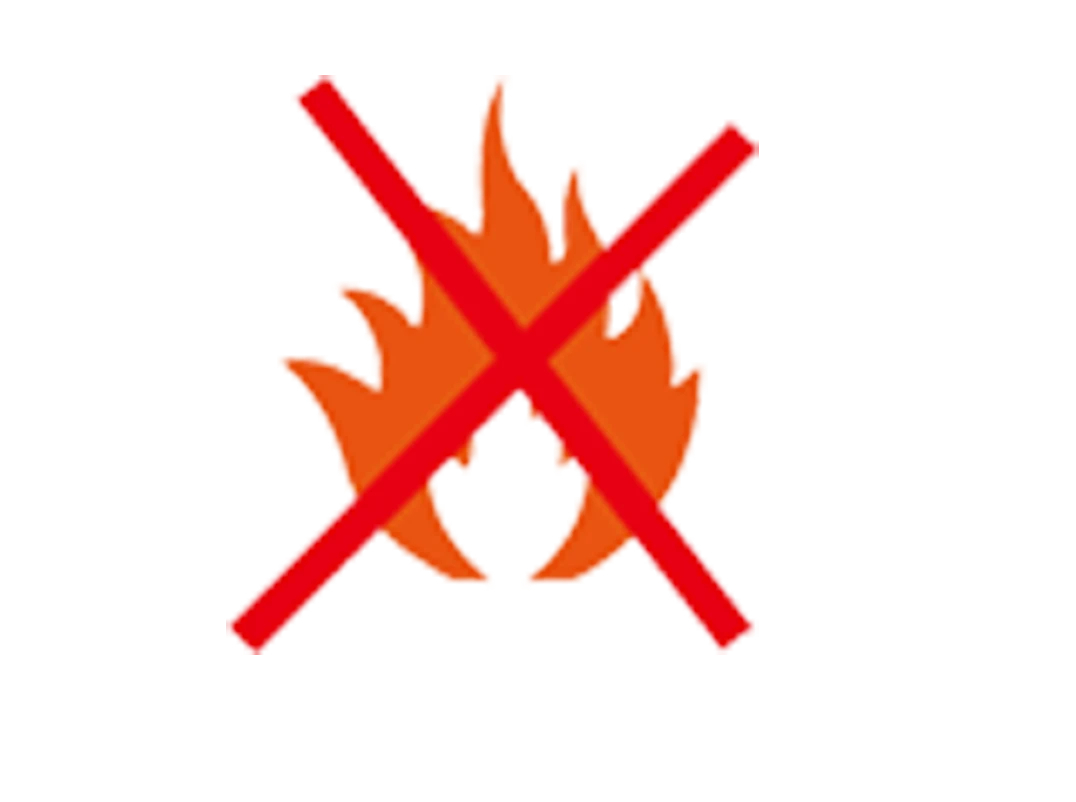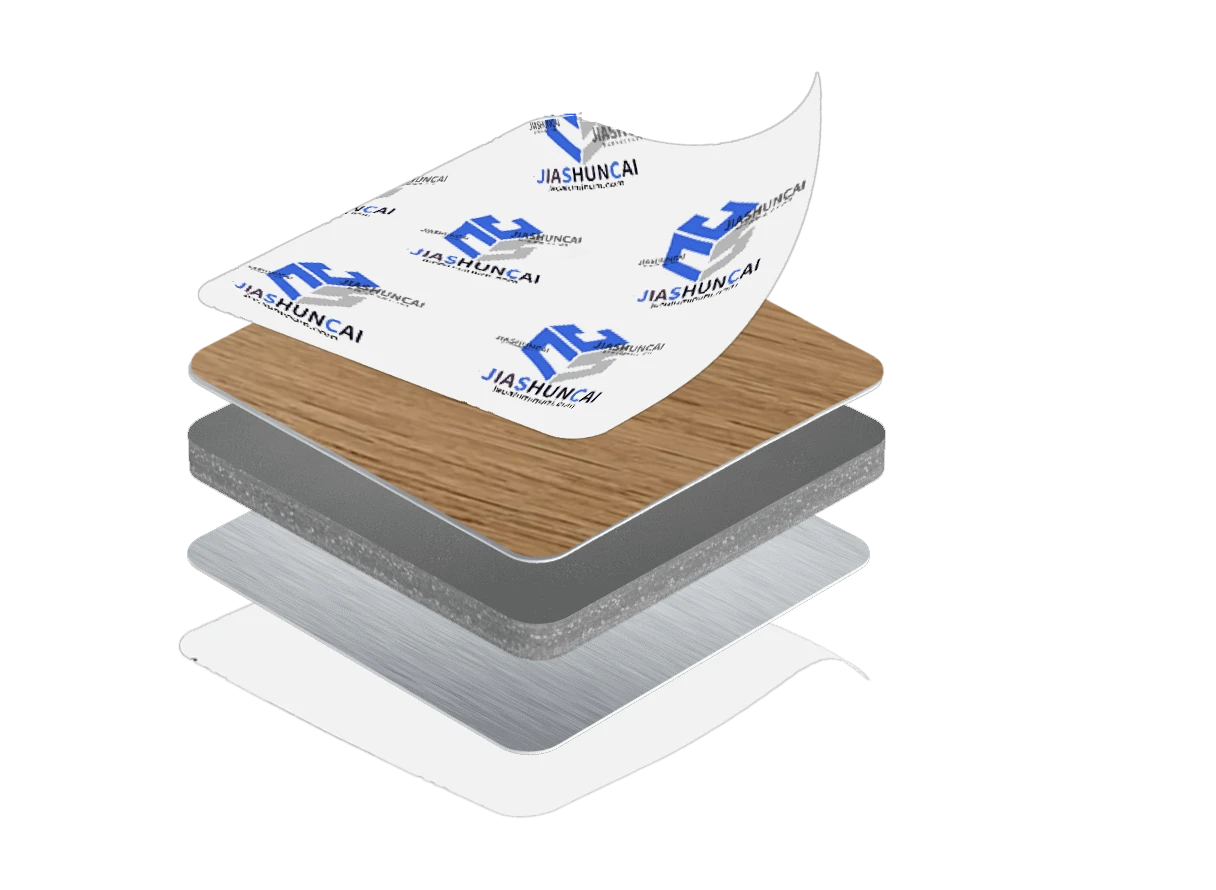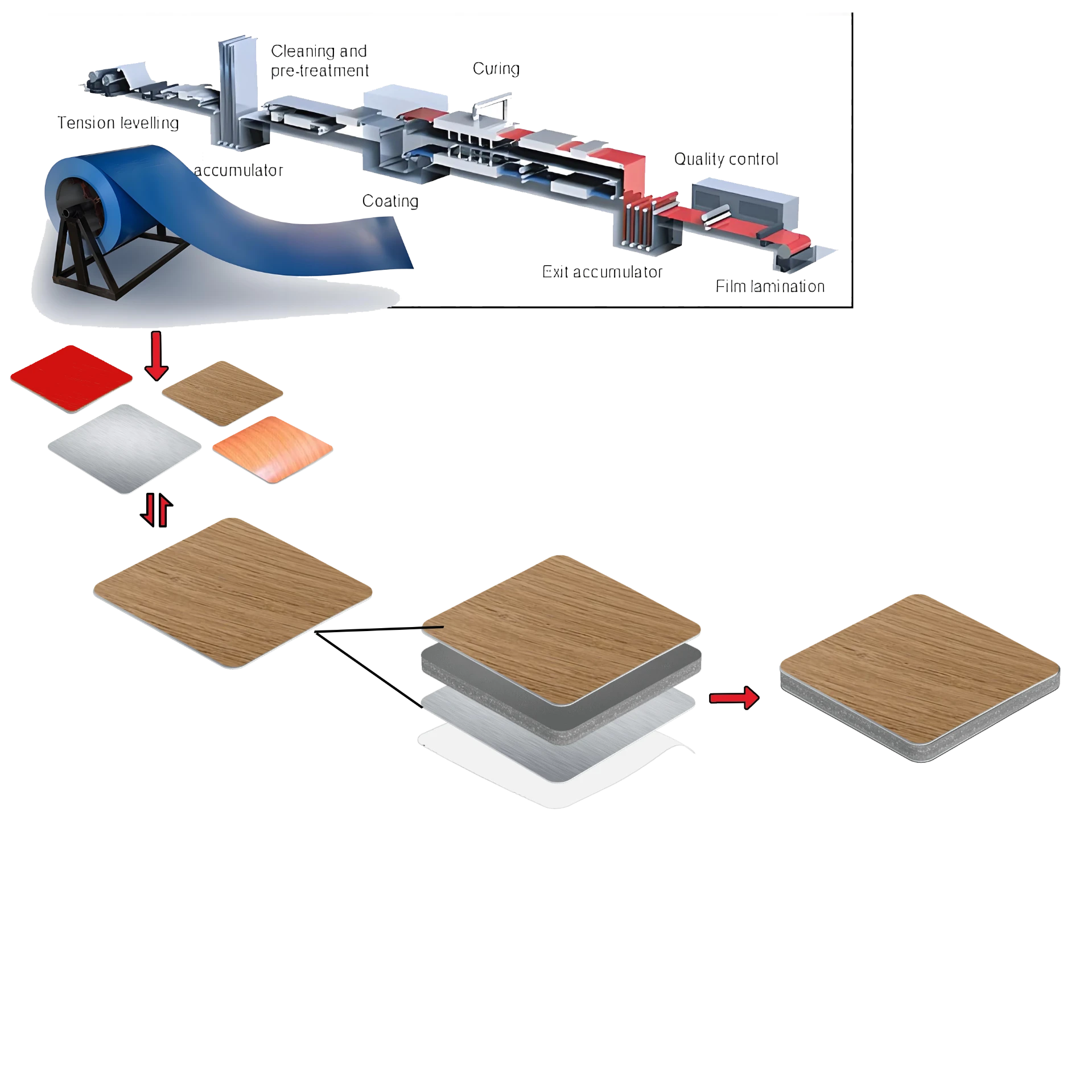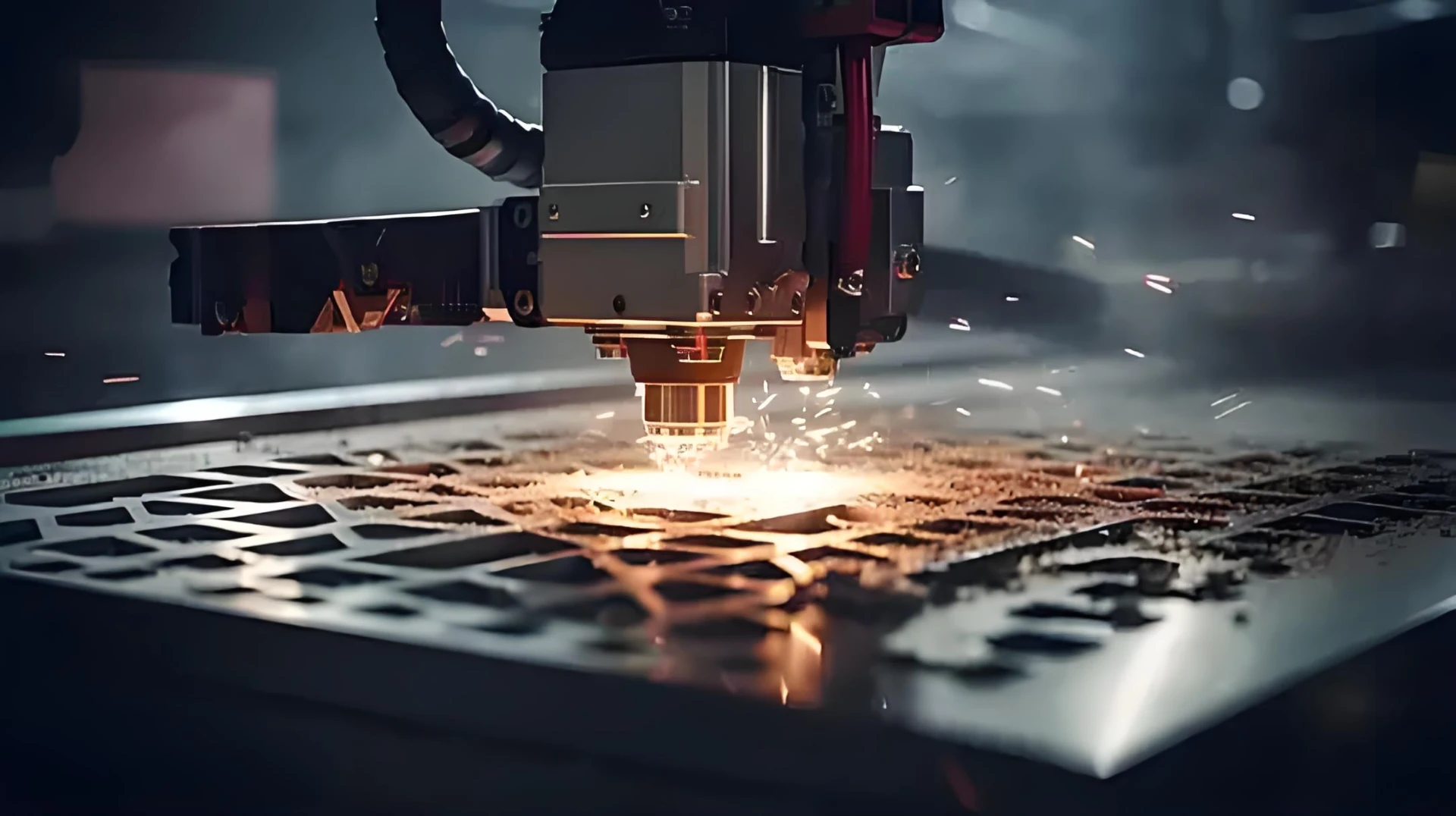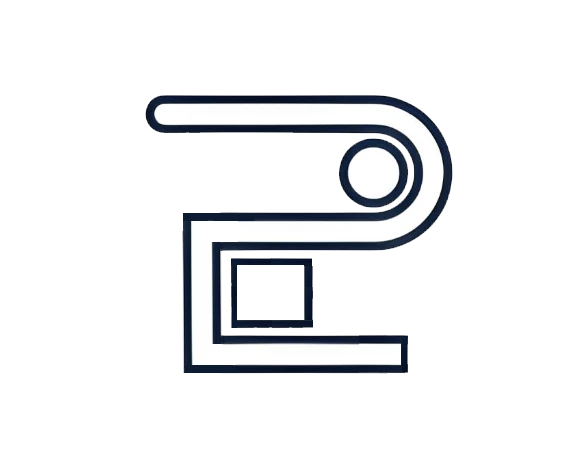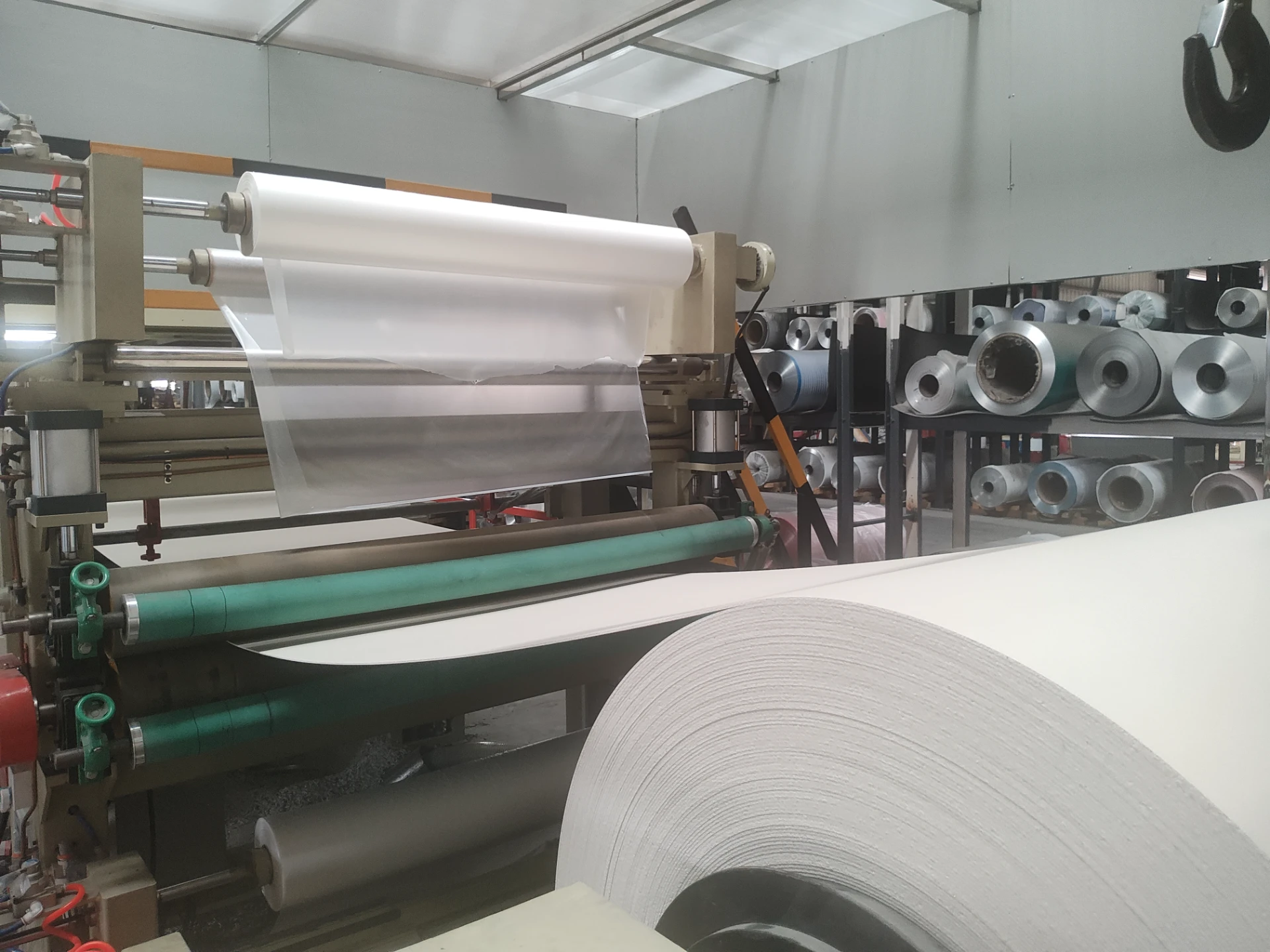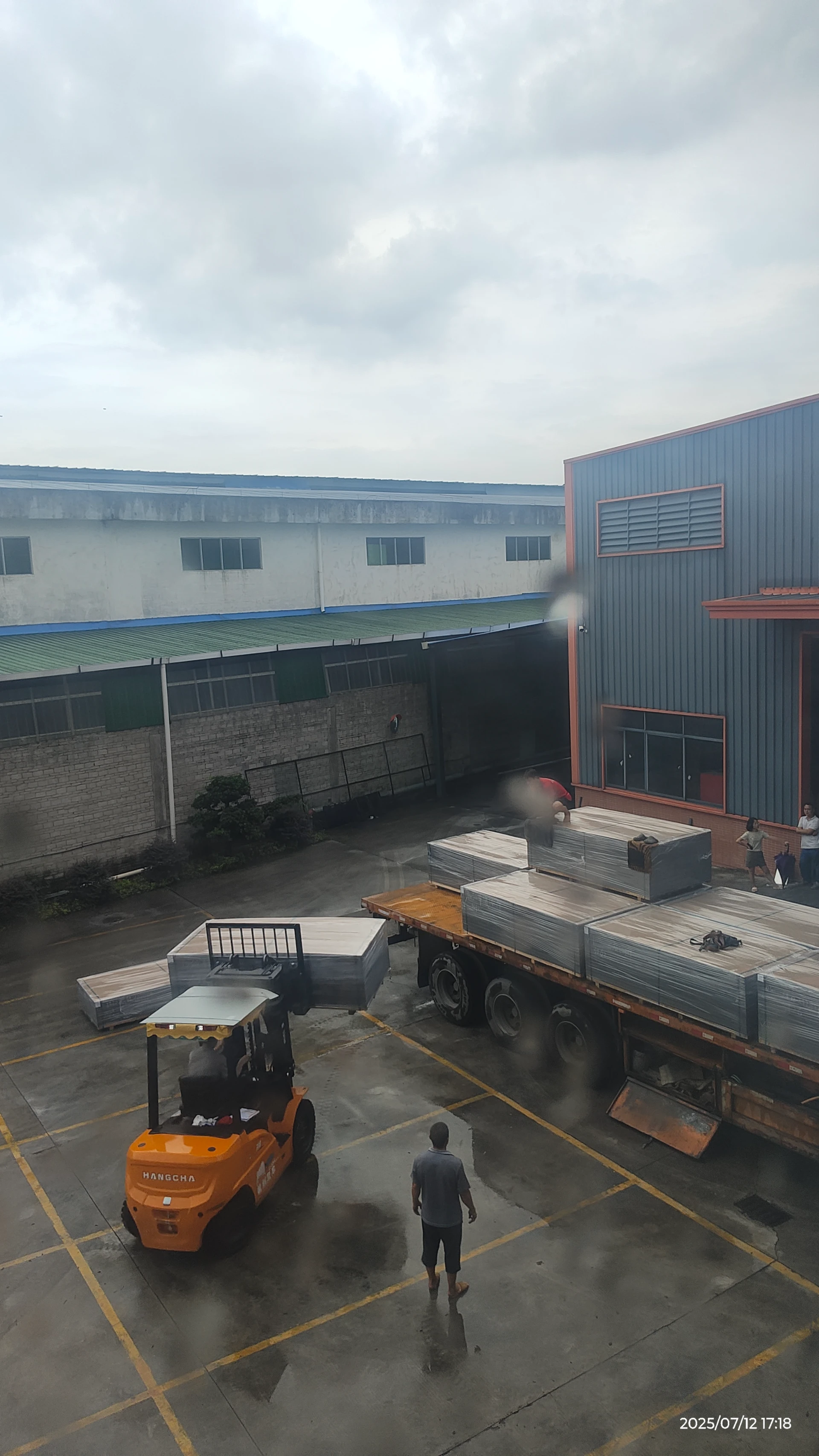-
Q:How to avoid burrs and coating cracking when cutting aluminum composite panels alucobond?
A:Key processing technologies and equipment:
• Tool selection:
◦ For the front side of the plate: use a diamond saw blade (with at least 120 teeth, rotating at 3000 rpm) to cut against the direction of the plate surface;
◦ For the back side of the plate: switch to a high-speed steel scraper to prevent aluminum skin curling.
• Process control:
◦ Remove the protective film before cutting (to avoid melting and sticking);
◦ Feed rate ≤ 2 m/min, use air cooling to reduce thermal damage.
Note: Absolutely do not use a grinding wheel cutter — it will definitely cause carbonization of the PVDF coating.
-
Q:How can the machining accuracy of shaped panels (curved surfaces/corner angles) be ensured?
A:Three-step high-precision processing procedure:
1. Digital modeling:
◦ Obtain building surface data through 3D scanning → Generate CNC machining code (error ≤ 0.1mm);
2. Numerical control shaping:
◦ Surface: Mold forming using multi-point vacuum thermoforming machine (heated to 140℃ ± 5℃);
◦ Angles: Use hydraulic bending machine (pressure 80-100 tons) with polyurethane mold;
3. Stress relief:
◦ After molding, keep at constant temperature of 25℃ for 24 hours to eliminate internal stress deformation.
-
Q:What are the technical specifications for the depth and position of edge grooves used for concealed hangers?
A:Parameter 1: Slot depth, requirement: ≤1/2 thickness of aluminum sheet (usually 0.3-0.5mm), inspection tool: laser thickness gauge. Parameter 2: Slot edge distance, requirement: ≥15mm (from the edge of the plate), inspection tool: digital vernier caliper. Parameter 3: Slot bottom fillet, requirement: R≥0.8mm (to prevent stress concentration), inspection tool: radius gauge.Must meet three-way safety standards, warning: excessive slotting can reduce the tensile strength of aluminum by 40%!
-
Q:Why is it necessary to add reinforcement to the back of large-sized aluminum plastic panels (≥3m)? How is it done?
A:Reason: To prevent wind-induced surface vibration deformation (deflection value must be ≤ L/180). Reinforcement process: 1. Material: Aluminum alloy T-shaped keel (thickness ≥ 2.0 mm); 2. Adhesion: Apply two-component epoxy structural adhesive (shear strength ≥ 8 MPa); After pressing, apply 0.5 kg/cm² weight for curing for 24 hours; 3. Positioning: Rib spacing ≤ 600 mm, distance from edge ≤ 150 mm.
-
Q:How to protect processed panels for durability?
A:Three critical protective treatments:
Protective process:
1. Edge sealing → Apply **epoxy edge sealant** (covers aluminum core, prevents moisture penetration)
2. Groove reinforcement → Inject **polyurethane elastomer** (fills micro-cracks, enhances groove toughness)
3. Backside corrosion protection → Spray **zinc-chromium coating** (salt spray test ≥ 1000 hours)
*Acceptance criteria: edge seal layer thickness ≥ 0.2mm, no missed areas/bubbles (detected by UV leak detector).*
Technical extension:
• Advantages of digital processing:
◦ Laser cutting precision: ±0.05mm (traditional mechanical cutting ±0.5mm);
◦ CNC grooving speed: 30 meters per minute (manual tools 3 meters per minute);
• Special processes:
◦ Perforation of light-transmitting panels: waterjet cutting (hole diameter ≥3mm, density ≤15%);
◦ Stone-like effect: surface embossing + UV printing (weather resistance grade ≥8).
Free sample processing provided → Verify process compatibility!

